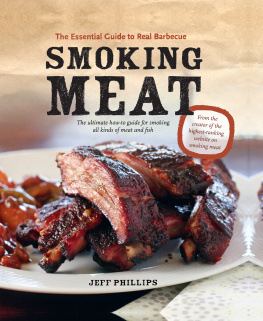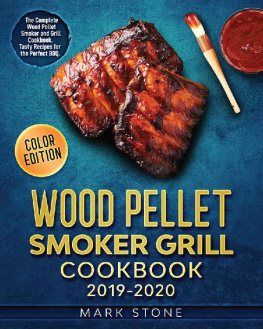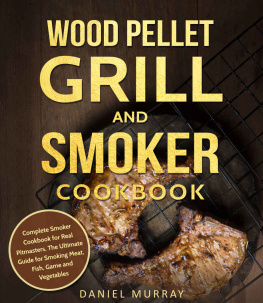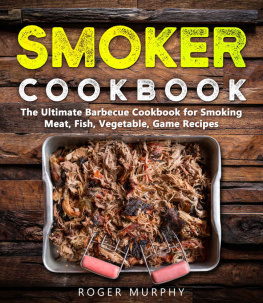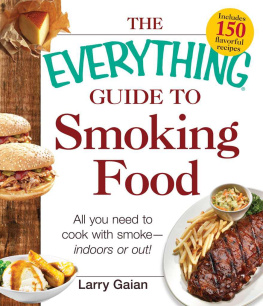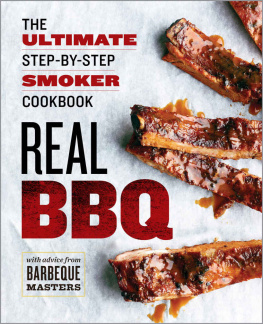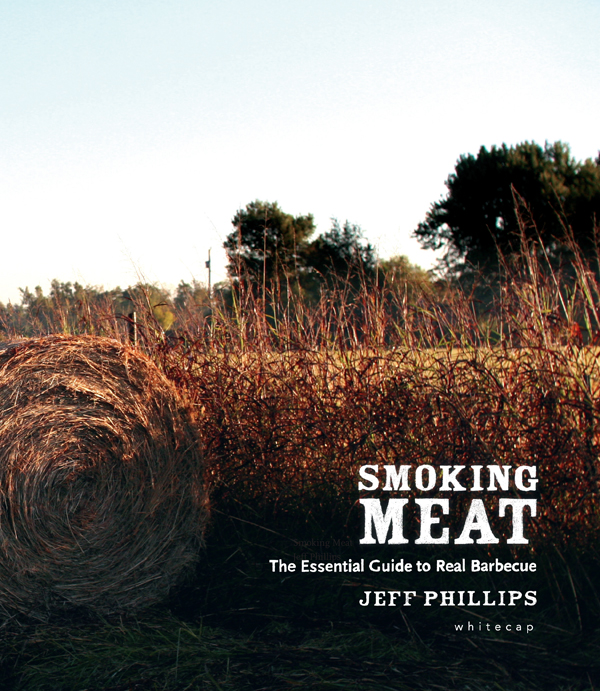
Copyright 2012 by Jeff PhillipsWhitecap Books. Ebook released in 2012
All rights reserved. No part of this publication may be reproduced, stored in a retrieval system, or transmitted in any form or by any means, electronic, mechanical, photocopying, recording, or otherwise, without the prior written permission of the publisher. For more information contact Whitecap Books, at 351 Lynn Avenue, North Vancouver, BC, Canada V7J 2C4.
The information in this book is true and complete to the best of the authors knowledge. All recommendations are made without guarantee on the part of the author or Whitecap Books Ltd. The author and publisher disclaim any liability in connection with the use of this information. Opinions expressed in this book do not necessarily represent the views and opinions of Whitecap Books. Whitecap Books does not review or endorse the contents of the websites listed in this book. Whitecap Books assumes no liability for any content or opinion expressed on these websites, nor does it warrant that the contents and links are error or virus free.
Whitecap Books is known for its expertise in the cookbook market, and has produced some of the most innovative and familiar titles found in kitchens across North America. Visit our website at www.whitecap.ca.
Publisher: Michael Burch Editing: Taryn Boyd, Lana Okerlund and Theresa Best Cover Design: Setareh Ashrafologhalai and Michelle Furbacher Photography: Michelle Furbacher Food styling: Michelle Furbacher, Laurie Abigail Phillips, and Jeff Phillips Illustrations: Setareh Ashrafologhalai Epublication created and edited by Jesse Marchand
Library and Archives Canada Cataloguing in Publication
Phillips, Jeff, 1970
Smoking meat : the essential guide to real barbecue / Jeff Phillips.
Includes index. Print ISBN 978-1-77050-038-9Epub ISBN 978-1-77050-161-4
1. Cooking (Smoked foods). 2. Cooking (Meat). 3. Smoked meat. 4. Barbecuing. I. Title.
TX835.P55 2012 ~ 641.6'16 ~ 012-901016-X
The publisher acknowledges the financial support of the Government of Canada through the Canada Book Fund (CBF) and the Province of British Columbia through the Book Publishing Tax Credit.
Introduction
I WAS BORN in Concord, North Carolina, but was raised all across the United States due to my dads love for traveling, and Ive always had a keen interest in food and cooking. Right out of high school and throughout college, it was not uncommon for me to treat my friends and family to food that I cooked or grilled on my little hibachi.
Just a few years after I was married, I was given a small Brinkmann smokerthe one that looks like R2D2and I set out to learn how to use it. I was determined to make the most of that smoker no matter how many folks told me it was cheap and hard to use. This sparked in me a love for the taste of smoked meats and a passion for barbecue tools and techniques. In this book, I share the assorted and tasty smoking adventures that followed.
I read every barbecuing book in our local library and everything else I could find on the subject, and I found myself turning out some of the best-tasting meat I had ever made. I cooked for anyone who would let me, and I would find any excuse for a get-together so I could experiment with a new type of meat to share with unsuspecting test subjects. Before long, I was being asked to cook for anniversaries, parties, and church events, and I especially loved cooking for all of my relatives on holidays.
Several years and many trial runs later, my wife, Abi, along with other members of my family, encouraged me to put all of my knowledge onto a website so I could share it with others. The more I thought about it, the more the idea made sense. From very meager beginnings, my website, www.smoking-meat.com, has grown to more than 300 pages of information on the subject, and we have 130,000 newsletter subscribers. There are 32,000 forum members at www.smokingmeatforums.com , as well. Pretty good for something that started as a hobby.
At the beginning, I worked on the website during the evenings, and I was a manufacturing engineer at a local company during the day. But in April 2009, after being laid off from my day job due to downsizing, I decided to go into the smoking meat business full time instead of putting myself back in the job market. That was possibly one of the best decisions I have ever made.
Within the next few months I was asked to write this book and I was featured in the Tulsa World, our local newspaper. These events were instrumental in letting me know that smoking meat is what I was born to do. My passion became my dream job: getting paid to play with fire.
This book will equip you with the basic knowledge you need to produce succulent slow-smoked food over hot coals and wood, right in your own backyard. It is written for anyone who wants to learn more about smoking meat, regardless of whether you are a novice or a seasoned pitmaster. It will help you produce food that will make you a legend in your neighborhood and maybe even in your town.
Some of my methods may be out of the box, but others may not follow what purists have taught for years about smoking meat. Im all about doing what works, even if it hasnt always been done that way. These pages are meant to kindle a fire in both you and your smoker, and to help you become the best pitmaster you can be.
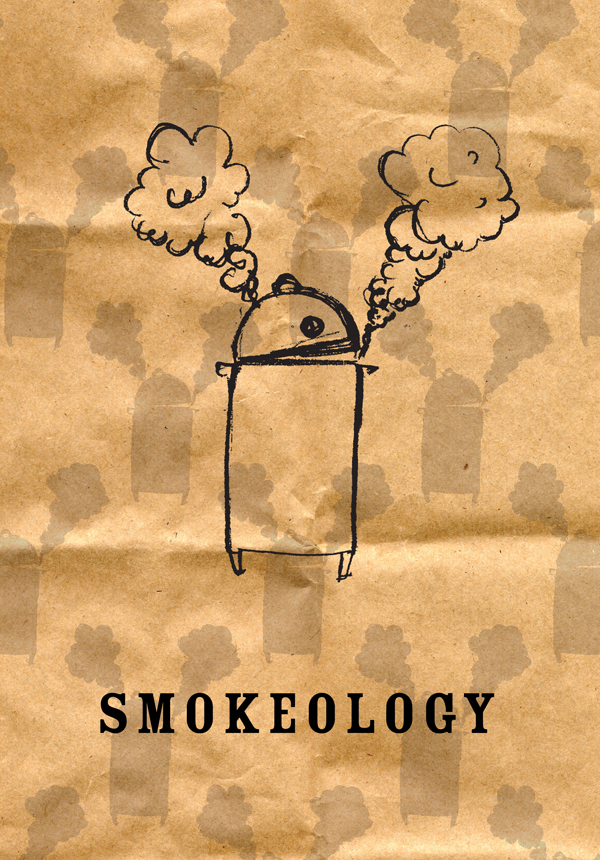
Apprciez le voyage! (Enjoy the journey!)
When you think of smoking meat, you may be picturing old methods of curing meat whereby it is cold smoked for days or even weeks on end, which allows it to be left out of the refrigerator. Thats not what this book is about. What I do is called hot smoking: the method of simultaneously cooking and smoking meat (or other foods) at temperatures of 200 F to 250 F , in less than 24 hours in almost all cases. From this point on, when I use the short form smoking, I am talking about hot smoking. Although I touch on cold smoking in this chapter and include a few recipes for cold smoking cheese and a few other food items, the subjects of cold smoking and curing meats are fodder enough for books of their own.
SO WHAT IS SMOKING and why is the device for it so aptly called a smoker? To make it very simple, smoking in todays world is the application of heat and real wood smoke to food to give it that comforting smoked flavor that most of us enjoy so much. There was a time when people cooked all of their food over a wood fire and the smoked flavor was the by-product of that method of cooking. Today, we have the option of cooking food in the oven, in the microwave, or on the grill, etc. with no smoke whatsoever if we so desire. To add the smoke flavor, we have to change our usual method of cooking to one that includes smoke from certain types of wood. The devices that have been designed to help make this method easier and more efficient are called smokers.
I will explain the different types of smokers and how they work, but suffice it to say that all smokers are the same in that they have a heat source fueled by wood, charcoal, gas, or electricity and, with the exception of the ones that are fueled by sticks of wood, a way to create or provide real smoke by adding chips or chunks of wood above the heat or even directly on the coals. Smokers have carefully placed vents or openings to create sufficient draft, which causes air to flow into the area of the smoker where the heat source or the firebox is located, mix with the smoke, and flow in and around the food in the smoke chamber, gently kissing it just before exiting out the other side via the chimney or exit vent. The vents are usually adjustable, to control the temperature of the smoker and/or the speed and volume of the air/smoke mixture. As you use your smoker and get used to its individual quirks, you will learn how to make it tick so that you can maintain the proper temperature and get the smoky flavor just the way that you and your family like it. By allowing the heat to cook the meat at very low temperatures and the smoke to flavor the meat for several hours, you will end up with some of the most tender, juicy, and flavorful meat on the planet.
Next page
